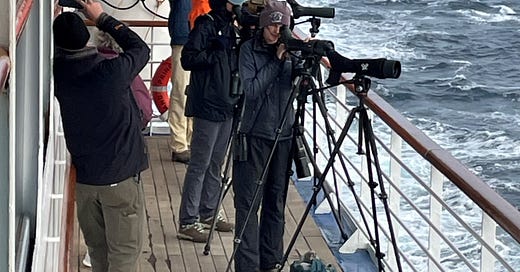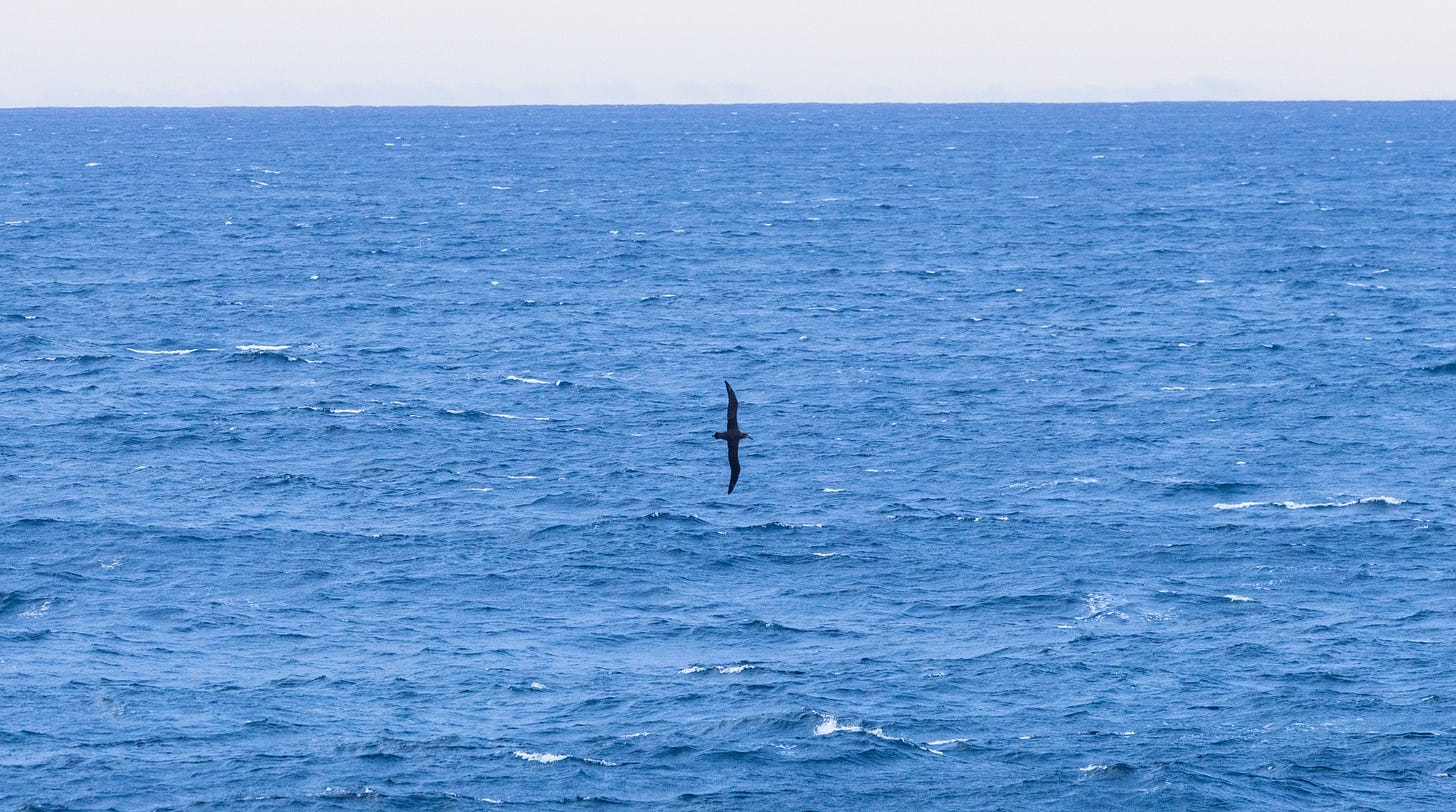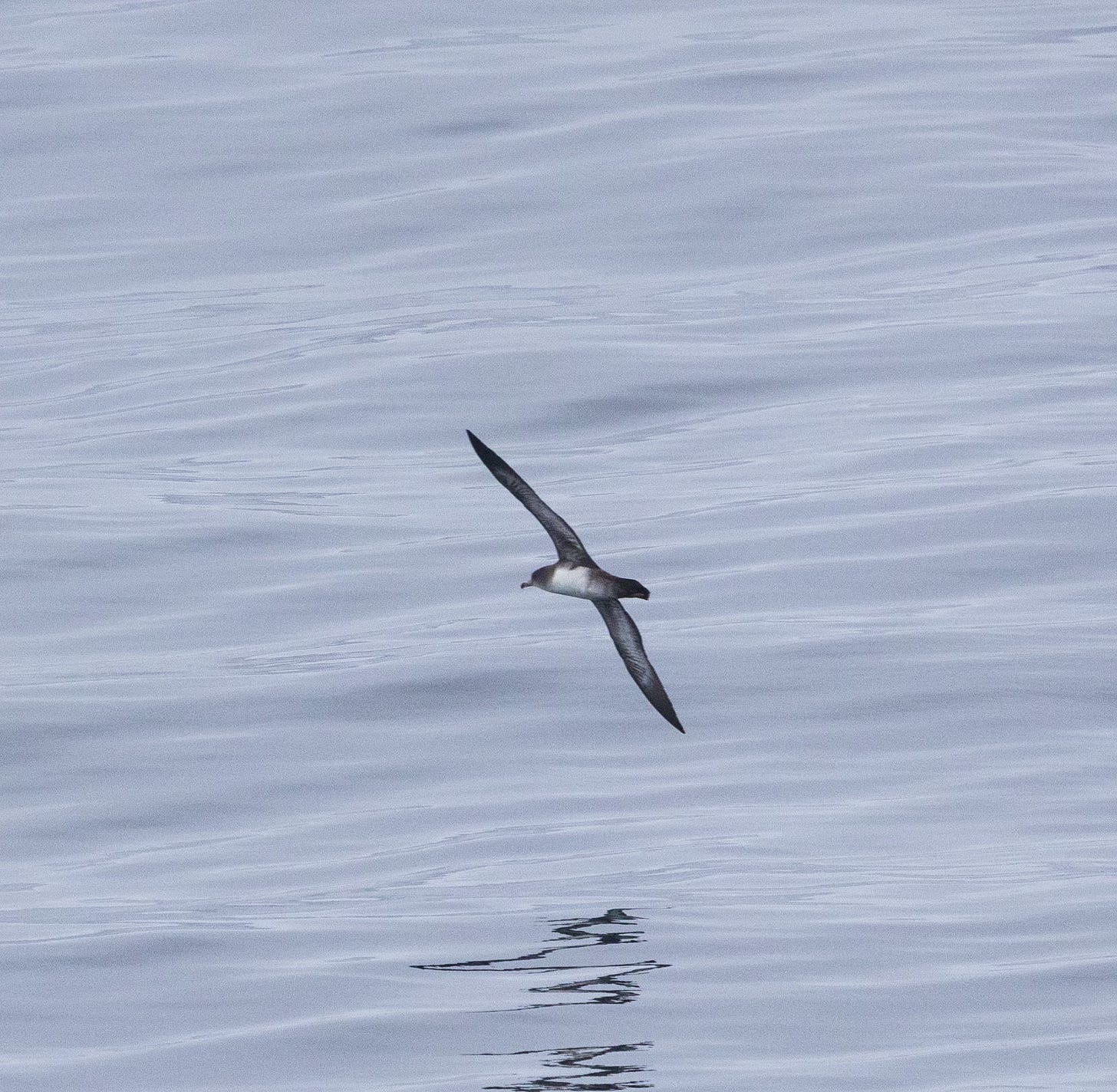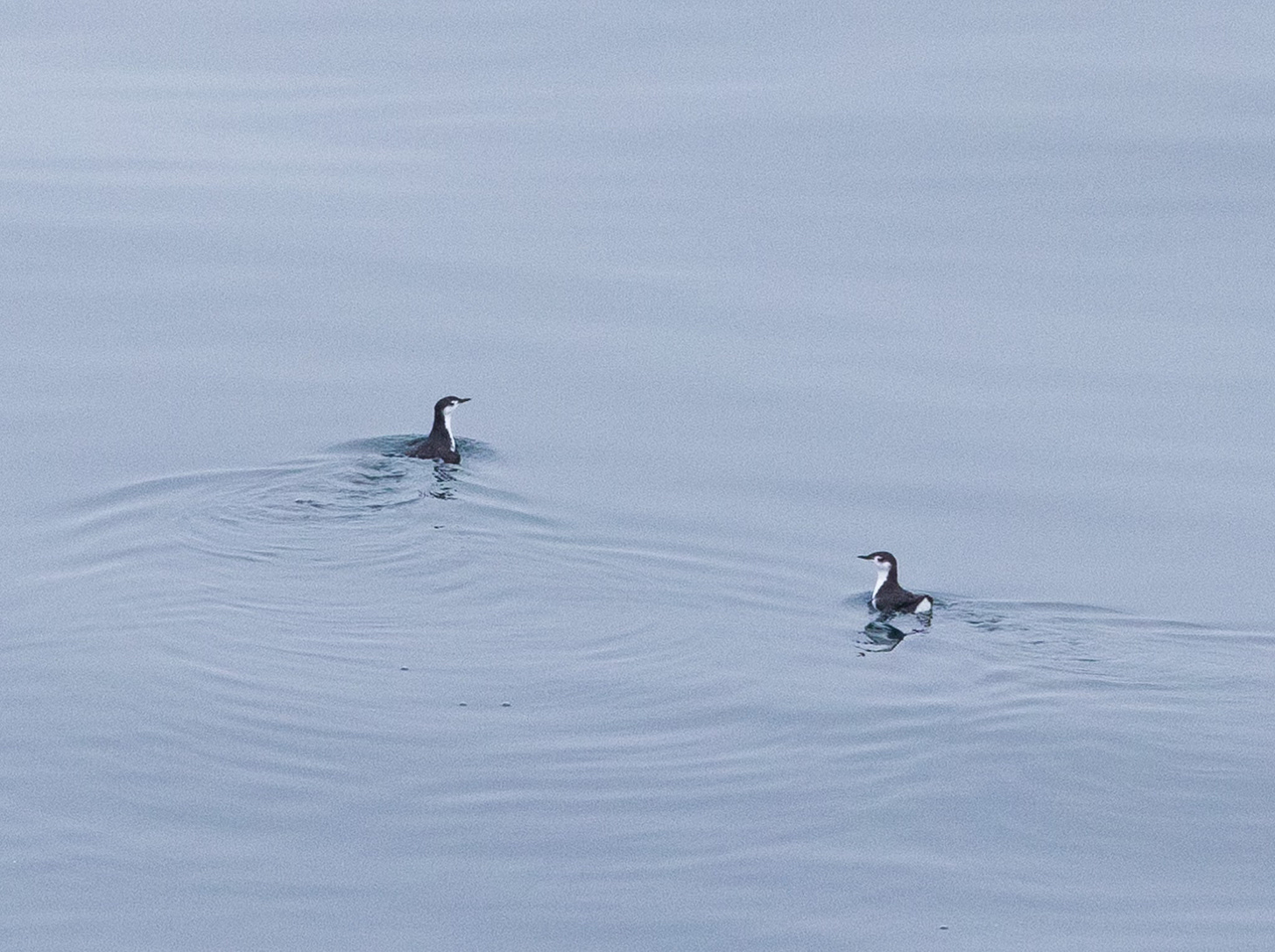1. Let’s begin with a “Repositioning” cruise from Vancouver to Los Angeles last week – in this case the repositioning of the Grand Princess for a LA-Hawaii cruise. No ports of call or entertainment of note. Just a straight shot south to LA, roughly 50-60 miles offshore. So if you are a birder, why hop on a repositioning cruise? Answer: three uninterrupted days “on the rail” searching for albatross, petrels, shearwaters, fulmars, jaegers and skuas that birders will rarely see close to shore. The trip summary is here. Check it out. (via eBird)
2. Who builds their own concert venues – well, bowerbirds of course!: Like architects behind the world’s great opera houses, male great bowerbirds build twiggy concert venues that amplify their raucous songs and make sure each note is pitch perfect to woo discerning females, according to a study published this month in Behavioral Ecology. The findings make a lot of sense, says cognitive scientist Cliodhna Quigley at the University of Vienna, who wasn’t involved in the work. It’s similar to how cupping your hands around your ears both channels incoming noises and alters the way the world sounds, she says. (via Science)
By Hap Ellis, Birders on the rail – Grand Princess Repositioning cruise.
3. Another example of tech advances helping ornithologists – in this case understanding the “lowcountry swamp canary” (otherwise known as the Prothonotary Warbler): Project Protho, Audubon South Carolina’s community science project at the Beidler Forest Audubon Center & Sanctuary, has worked for over a decade studying the Prothonotary Warbler, Protonotaria citrea. This sunny ball of feathers and energy that sings a “sweet-sweet-sweet” song from the heart of shady Four Holes Swamp has kept many secrets about its life during the other part of the year when it’s not at Beidler. We currently don’t know all of the details about what route they take to their wintering grounds, how high they fly, how fast they fly, when and where they stop to refuel, and when they depart either destination. They have lots of little secrets in their little fuzzy yellow heads! (via Audubon)
4. Hilario Ascasubis, we have a parrot problem: By 6:45 a.m. Friday, Foster Parrots in Hope Valley had already received two new requests from people wanting to surrender a total of seven birds. One bird, a sulphur-crested cockatoo named Snowball, lived its whole life – 14 years – in one home, but the owner's daughter has allergies, and Snowball "screeches if he doesn't have non-stop attention," the owner wrote on their surrender application. The other applicant asked the sanctuary to take six cockatiels – Spiky, Ray, Litu, Spooky, Mentu and Ray Jr. – because they were leaving the country for an extended period. Three of the birds were purchased from a pet store two years ago; three were hatched in the home less than a year ago, the owner explained. (via Providence Journal)
5. Some migration basics from Kenn and Kimberly Kaufman: Autumn is migration season. All over North America and beyond, hundreds of millions of birds are on the move, traveling from their breeding grounds to their wintering grounds. But they don’t all travel in the same ways. Some birds migrate in flocks and some alone; certain birds move at night, others by day; some travel more than halfway around the globe, while certain birds shift only a few miles to a slightly different habitat. There are almost as many approaches as there are species of migratory birds. Here are just a few bird migration variations. (via Birds and Blooms)
6. More bad news from Tule Lake NWR: More than 80,000 birds have died over the past two and half months at a network of wildlife refuges on the Oregon-California border, the largest outbreak in the recorded history of the refuges in a region roiled by drought and water uncertainty. The deaths, linked to a rare combination of botulism and avian flu, increased sharply since the end of August when about 5,000 dead birds had been counted. And because botulism thrives in warm, stagnant water, many more birds are likely to die before the rainy season and cold temperatures begin, said John Vradenburg, supervisory biologist at the refuge complex. (via Oregon Live)
By Hap Ellis, A Black-footed Albatross’ world - Grand Princess Repositioning cruise.
7. Reconsidering? The latest on AOS’s announced plan to do away with bird names that honor people: Say goodbye to Bachman’s Sparrow, Scott’s Oriole and Townsend’s Warbler. Those three birds are among a half-dozen that will get renamed first under a plan by the American Ornithological Society to do away with common bird names that honor people. But whether or not the society will keep going after that, and get rid of all eponymous bird names, remains to be seen. (via National Public Radio)
8. Maybe they are Vikings fans?: “It seems counterintuitive, but experts tell us that the main reason birds migrate is not to escape the cold — many migratory birds could probably survive even Minnesota’s winters. But they can’t survive without food, and as their food sources — fruit and insects, for many songbirds — disappear, they do, too. When we think about migration, we tend to focus on long-distance migrants such as Baltimore orioles, which head to Costa Rica, Panama and farther south each fall. Something like 350 species of North American birds fly thousands of miles twice each year. They have to be very hardy birds, because migration is a severe test of their physical and mental abilities. (via Star Tribune)
9. Avian flu latest –a bird flu President? (Hope not): Presidents always seem to have a crisis to deal with. George W. Bush had 9/11. Barack Obama had the Great Recession. Donald Trump had the coronavirus pandemic. Joe Biden had the war in the Middle East. For America’s next president, the crisis might be bird flu. The United States is in the middle of an unprecedented bout of bird flu, also known as H5N1. Since 2022, the virus has killed millions of birds and spread to mammals, including cows. Dairy farms are struggling to contain outbreaks. A few humans have fallen sick, too—mostly farmworkers who spend a lot of time near chickens or cows—but Americans have largely remained nonplussed by bird flu. No one in the U.S. has died or gotten seriously sick, and the risk to us is considered low, because humans rarely spread the virus to others. (via That Atlantic)
By Hap Ellis, Pink-footed Shearwater - Grand Princess Repositioning cruise.
10. More avian news - Good to be an island, but may not help in the long run: Australia and the rest of Oceania are the last regions free of the highly pathogenic strain of bird flu that has caused mass mortality in birds across the world and a massive outbreak in dairy cattle in the United States. Why animals in the southern region have so far escaped infection is a mystery, but scientists have several theories. For one, Australia is geographically isolated and doesn’t import live poultry, says Frank Wong, a virologist at the CSIRO Australian Centre for Disease Preparedness in Geelong. Many of the countries’ birds are endemic and do not migrate to regions where the virus is spreading. (via Nature)
11. We hope so but are doubtful: Climate change is one of the greatest threats to birds everywhere. There’s no question that we must do everything we can to reverse climate change and ensure a sustainable future for birds, people, and the planet. This is why the National Audubon Society was sure to have a presence at Climate Week NYC, one of the largest gatherings of global leaders, environmental organizations, business partners and others dedicated to reducing the effects of climate change on our world. At this year's Climate Week, we emphasized that doing everything we can means being creative, collaborating, and putting in the work to find decarbonization solutions that reduce emissions without compromising the health of birds, their habitats, and our communities. (via Audubon)
12. One (of the few) reasons to keep your hummingbird feeders up if you live in New England: Every spring, Maine Audubon gets inundated with questions asking “when should we put our hummingbird feeders up?” and every fall, typically in September, we get asked “when can our feeders come down?” So, it is time for our semi-annual Public Service Announcement about hummingbird feeders! Now that the days are getting shorter, and the air cooler, those birds are fueling up and heading south. How are they fueling up? Spotted Jewelweed, or touch-me-not (Impatiens capensis), is a great native flower that they favor, with its orange-red irregular (tubular) flower. (via Maine Audubon)
By Hap Ellis, Guadalope Murrelet - Grand Princess Repositioning cruise.
13. Stela McCartney is in The Guardian (again), though not sure where the 1.5 billion number comes from: The battle to banish fur from fashion being mostly won, with almost all luxury brands fur-free, Stella McCartney is now on a mission to save the birds. “1.5 billion birds are killed for their feathers by the fashion industry every year,” the designer said backstage after a street catwalk show held in the shadow of the Eiffel Tower, launching a campaign to put bird cruelty in the spotlight. A million ostriches are killed each year by some estimates, with the South African ostrich industry releasing 62,000 tonnes of carbon-equivalent emissions. Feathered angel wings have been a signature look on the catwalk at Victoria’s Secret for decades – the animal rights group Peta has claimed that one single fashion show used 620,000 feathers from chickens, pheasants and ostriches. (via The Guardian)
14. Let’s end with a short video from Cape Cod of a large swallow fallout on Cape Cod (MA): Alfred Hitchcock’s move “The Birds” came out in 1963, starring Tippi Hedren, Rod Taylor and Jessica Tandy. As kids we never saw the movie in the theater, but by the early 1970’s it was a staple for late night TV, which was where our neighborhood kids found it during sleepovers. Filmed in Bodega Bay, California, it had all the Hitchcock cinema techniques for a good thriller. The attacking birds in the movie started out as gulls and then the crows and sparrows arrived, by the thousands. The underlying theme was the birds were fighting back after years of abuse from humankind. Photographing birds has always been a rewarding passion. (via Cape Cod Times)
Bird Videos of the Week
Cornell Live Bird Cam - Bananaquit.
Cornell Live Bird Cam - Owl Cam!








